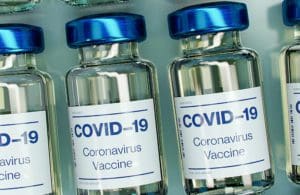
[Photo by Daniel Schludi on Unsplash]
Now that it has been nearly four months since the FDA authorized the first COVID-19 vaccine, a decent amount of safety information is available about the Pfizer-BioNTech vaccine.
CDC recently released a summary of adverse event data related to the Pfizer-BioNTech vaccine based on more than 5,000 entries to the Vaccine Adverse Event Reporting System collected from Dec. 14, 2020, to Jan. 13.
The summary also included data related to more than 1,000 recipients of the first dose of Moderna COVID-19 vaccine.
The entries make up only a minuscule fraction of the more than 90 million doses of COVID-19 vaccine that Americans have received to date.
A total of 93.7% of the reports related to the first dose of Pfizer-BioNTech vaccine were nonserious, although that figure dropped to 78.6% when it came to the second dose. For the Moderna vaccine, 81.2% of the events related to the first vaccine dose were nonserious. (Here’s how FDA defines serious adverse events.)
Females were considerably more likely to face adverse reactions. More than 70% of the reports related to COVID-19 vaccines were from women. Women are also more likely to have anaphylactic reactions to vaccines than men.
The most common side effects were similar for the first and second doses of the Pfizer-BioNTech vaccine and the first dose of Moderna vaccine. The CDC report did not cite adverse events related to the second dose of the Moderna vaccine.
The J&J vaccine had not been authorized when the CDC created the report.
The most common side effects include the following:
- Injection site pain. This adverse event was by far the most common. A total of 70.9% of enrollees in a text-messaging-based tool known as V-SAFE reported injection site pain related to COVID-19 vaccines.
- Fatigue. About one in three COVID-19 vaccine recipients reported fatigue. The side effect was more common after the second dose than the first. A total of 53.5% of the recipients of the second dose of Pfizer-BioNTech vaccine reported fatigue, while 21.9% did so after the first injection.
- Headache. A total of 29.5% of participants reported headaches. Again, the side effect was much more common after the second dose. Headache and fatigue are also common COVID-19 symptoms.
- Myalgia. Some 22.9% of the V-SAFE enrollees who received COVID-19 vaccines reported myalgia or muscle pain. The side effect was also considerably more common after the second dose than the first. Some 47% of V-Safe enrollees reported the symptom after receiving the second dose of the Pfizer-BioNTech vaccine.
- Chills and fever. While two separate adverse events, the number of people encountering these adverse events is approximately equal. Many people with COVID-19 also report having chills or fever. For V-SAFE enrollees, 30.6% reported having chills after the second dose of the Pfizer-BioNTech vaccine, while 29.2% reported having a fever. Also known as pyrexia, fever was a common side effect for recipients of the COVID-19 vaccine listed in the VAERS database. A total of 15.4% of the recipients of Moderna and Pfizer-BioNTech vaccines reported pyrexia, while an additional 2.5% reported “feeling hot,” and 1.7% reported increased temperature.
It’s worth noting that all of the VAERS database entries have not been verified by medical professionals, and not all of the entries in the database are necessarily linked to vaccines.
Also, the percentages cited in the VAERS database do not reflect the total number of people who have received COVID-19 vaccines in the U.S.
Other selected adverse events related to COVID-19 vaccines cited in the VAERS database include the following:
- Tremor – 2.16%
- Peripheral swelling – 1.78%
- Syncope (fainting) – 1.30%
- Swelling face – 1.26%.
- Facial paralysis – 1.11%
- Anaphylactic reaction 0.83%
A letter published in NEJM also reports that delayed large injection-site reactions have rarely occurred in recipients of the Moderna mRNA-1273 vaccine.